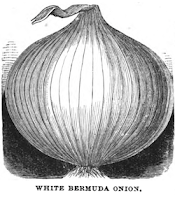 |
| Early settlers knew the value of kitchen gardens, as this photo from Florida's state archives shows. |
Fall and winter in Florida are prime growing seasons for many vegetables, including lettuce. Head lettuce can be tricky in home gardens, but leafy kinds grow really well.
Large kitchen gardens were common sights in early Florida homesteads. I used to have a fair-sized vegetable garden, about 8 feet by 10 feet. Now I have container gardens because arthritis dictates my moves.
You can do a lot with containers. My husband's Earth box of scallions is looking good. Some of my buttercrunch and romaine lettuces, grown from transplants, have already shown up on the dinner table. Seedlings of leaf and romaine lettuces, radishes and carrots have sprouted and are ready for transplanting. Sounds like a haul, but it isn't and doesn't require a lot of space or time.
Still, I can run to the supermarket if I have a crop failure. Vegetable gardening wasn't a hobby for pioneer Floridians. Healthful survival often depended on what could be procured by a settler's own hand. Of course stores stocked and sold food. Many settlers relied on stores only for staples they couldn't produce themselves, such as flour, coffee and tea.
I've always wondered what varieties of vegetables Floridians grew in the 1800s and early 1900s. Among the many things lost to the past are numerous distinctive vegetable varieties. Some modern companies and organizations specialize in heirloom seed stocks, thankfully. But many regional varieties are long gone.
 |
| Bermuda onions are an old favorite. This drawing is from the 1885 garden book. |
Over the years, I've grown some old-timey varieties with varying degrees of success. It's always fun to experiment with them. I like searching out old garden guides to see what types of vegetables were recommended for Florida. One gold-mine book was published in 1885. Gardening in Florida, A Treatise on the Vegetables and Tropical Products of Florida, was written by J.N Whitner, A.M. He was a professor of agriculture at Florida Agricultural College in Lake City in north Florida.
Professor Whitner gave cultivation instructions for numerous vegetables and suggested certain varieties of each. Here are his choices for Florida gardeners in 1885:
- Asparagus - Colossal, Defiance
- Bush Beans - Early Mohawk, Golden Wax, Black Wax, Red and White Valentine, Long Yellow Six weeks
- Pole Beans - Giant Wax, Dreer's Improved Lima
- Beet - for the table: Egyptian Turnip, Early Blood Turnip, Early Yellow Turnip, Pine Apple; for feeding stock: Mangel Wurzel, Long Red, Long Yellow Mangel Wurzel
- Borecole (known today as Kale) - Dwarf German Greens, Green Curled Scotch, Purple Borecole
- Broccoli - White Cape, Purple Cape, Early Walcheren
- Cabbage - Early Jersey Wakefield, Early Winningstadt, Fottler's Improved Early Brunswick, Early Giant Bleichfield, Flat Dutch, Henderson's Early Summer, Improved American Savoy
- Carrots - Half Long Red, Danvers, Long Orange Improved
- Cauliflower - Early Snowball, Extra Early Paris, Extra Early Dwarf Erfurt
- Celery - Incomparable Dwarf White, Incomparable Dwarf Crimson, Boston Market, Golden Heart, White Plumed
- Corn - Egyptian Sweet, Sewell's Evergreen, Mammoth Sugar, Tuscarora
- Cucumber - Improved White Spine, Green Prolific, Long Green
- Eggplant - New York Improved, Black Pekin, Scarlet Fruited, White Fruited
- Lettuce - Green Fringed, Black Seeded Simpson, All the Year Round
- Okra - Giant, Dwarf
- Onion - Giant Rocca, New Queen, New Neapolitan Marzajola, Bermuda (the Bermuda was so popular it had its own separate write-up)
- Parsnip - Hollow Crown
- Parsley - Carter's Fern Leaved, Fine Triple Curled, Myatt's Garnishing
- Pea (green pea not field pea) - Ferry's First and Best, Bliss' American Wonder, McLean's Little Gem, Carter's Little Wonder, Prize-Taker Green Marrow, Fill Basket, Veitch's Perfection, Champion of England, Early Dwarf Wrinkled
- Radish - Long Scarlet Short Top, Scarlet Turnip, White Tipped Scarlet Turnip, Yellow Summer Turnip
- Spinach - Improved Round Leaved
- Squash - Yellow and White Bush Scalloped Squash, Boston Marrow, Hubbard
- Tomato - Acme, Hathaway's Excelsior, Golden Trophy
- Turnip - Early White Dutch, Early Red Top Dutch, White Globe
I may envy these past gardeners the seed choices lost to us today. But other aspects of gardening in Florida are best left in the past. The book's section on fertilizers offers specifics on how to dissolve bones to create bone meal for working into the soil. It was a days-long process. Just reading about it made me tired. And glad a bag of balanced organic fertilizer is sitting on the garden shelf in my garage.
